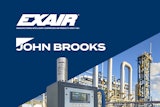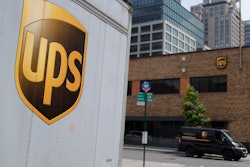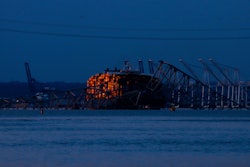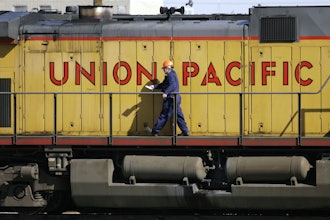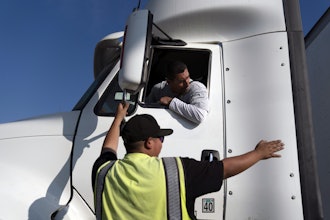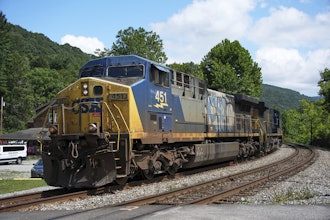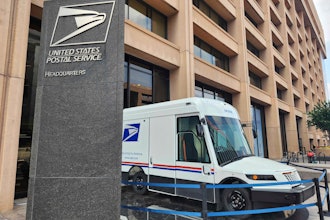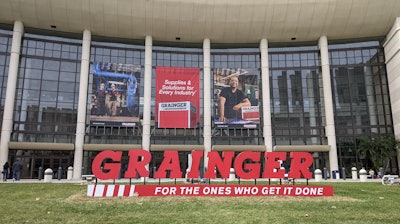
For North America’s largest industrial distributor, its internal service mantra is fairly simple: “next day, complete.”
In practice, that means that companies and institutions buying industrial supplies from Grainger should get their entire order in as little packaging as possible — fast.
Grainger, of course, has the scale to make it happen, but it’s one thing to open facilities from coast to coast, and quite another to optimize that network to reach essentially every customer across the continent with what they need by the following day.
 Andy Szal/Industrial Distribution
Andy Szal/Industrial Distribution
Seth Chastain, Grainger’s senior director of network strategy, architecture and operations optimization, and Ben Frost, its director of inventory optimization and advanced analytics, discussed the strategy behind the locations of its distribution hubs – including two yet to open – as well as the advanced systems it uses to stock those facilities.
“What we’re trying to do is make sure that we’re shipping all of the items out of the same building, and it’s all arriving to you the same day,” Chastain said.
Not only does that enable supplies to get to customers faster, but it reduces the environmental impact of the overall shipment.
But it’s also a complicated proposition. Chastain and Frost said the company’s network of 26 distribution centers and some 250 branches deal with millions of products – including 600,000 in-stock unique items – from more than 5,000 suppliers to its millions of customers. All told, those amount to roughly 2 trillion possible combinations.
The company combines four “ingredients” into a logistics operation that’s both repeatable and scalable, from network design and inventory availability to order processing and delivery.
 Map of Grainger facilities from its 2022 Investor Day presentation.W.W. Grainger Inc.
Map of Grainger facilities from its 2022 Investor Day presentation.W.W. Grainger Inc.
The company also not only monitors internal scorecards on service and capacity, but long-term forecasts that inform where Grainger should consider expansion. Those helped lead to two Grainger distribution hubs scheduled to begin operations in the next two years: a Northwest Distribution Center in Gresham, Oregon, opening in 2025, and the company’s Houston Texas Distribution Center, located in Hockley, Texas, in 2026.
Chastain noted that those new facilities would not only bolster service in those markets and in ones nearby, but would impact capacity and inventory capabilities nationwide and beyond.
“So if you don’t live in Portland or Houston and are saying, ‘What’s in it for me?,’ the answer is [that] we will use that to then increase service across the entire network,” Chastain said.
How Grainger increases that service, Frost said, is through a proprietary inventory platform built on “modern data science and operations and research principles.” Machine learning systems power the company’s demand forecasts, as well as help analyze supplier lead times.
 Andy Szal/Industrial Distribution
Andy Szal/Industrial Distribution
Those models help Grainger keep shipments moving smoothly even when demand spikes and lead times get stretched. Routing logic systems, meanwhile, help make sure that each customer’s order goes to the Grainger facility closest to them — and gets back to them in one box the following day. Out of thousands of possible facility combinations for each order, Grainger aims to narrow it down to just one.
“Where we place our buildings, how we think about the size and footprint of our network, that’s really critical to meeting our speed-to-delivery goals,” Frost said.
